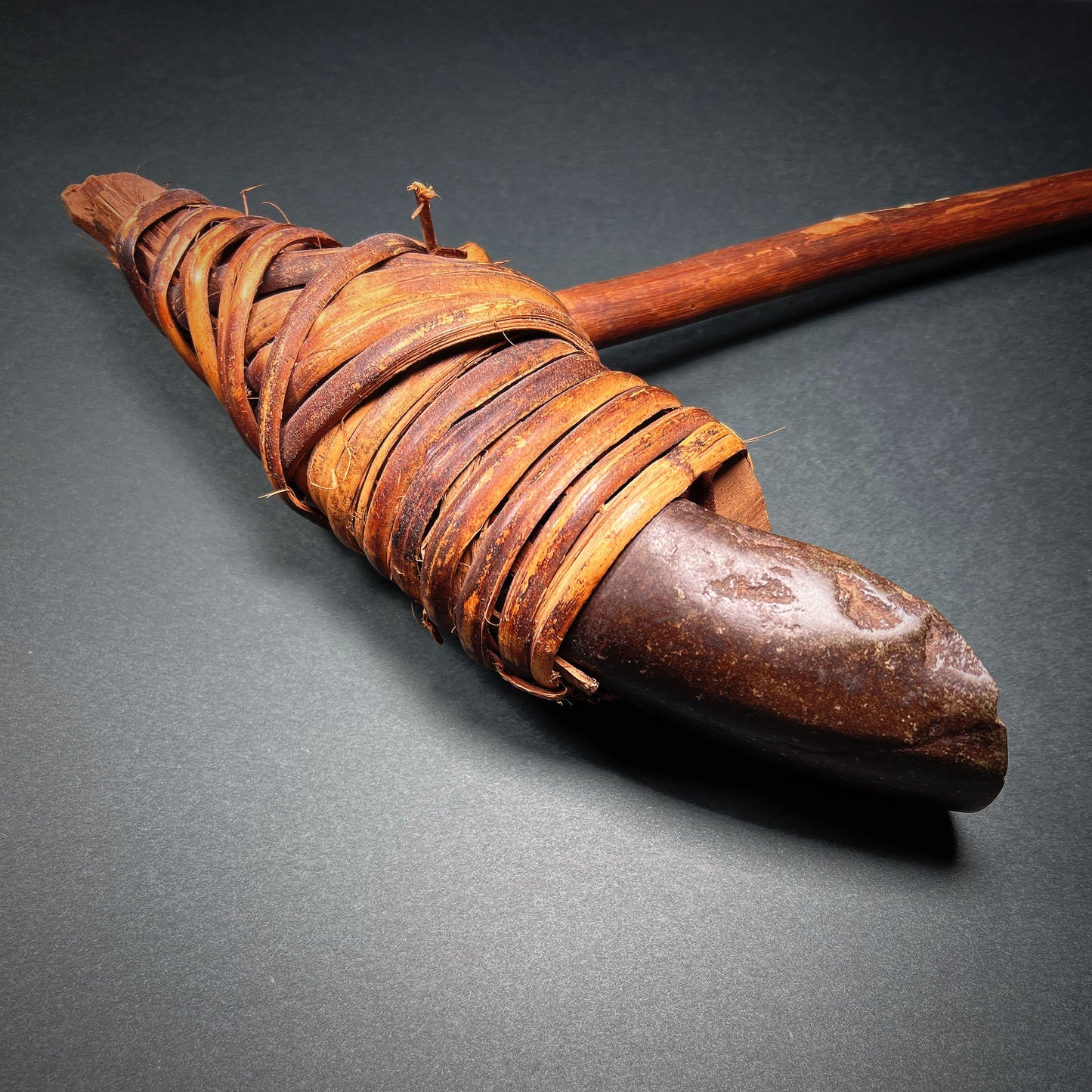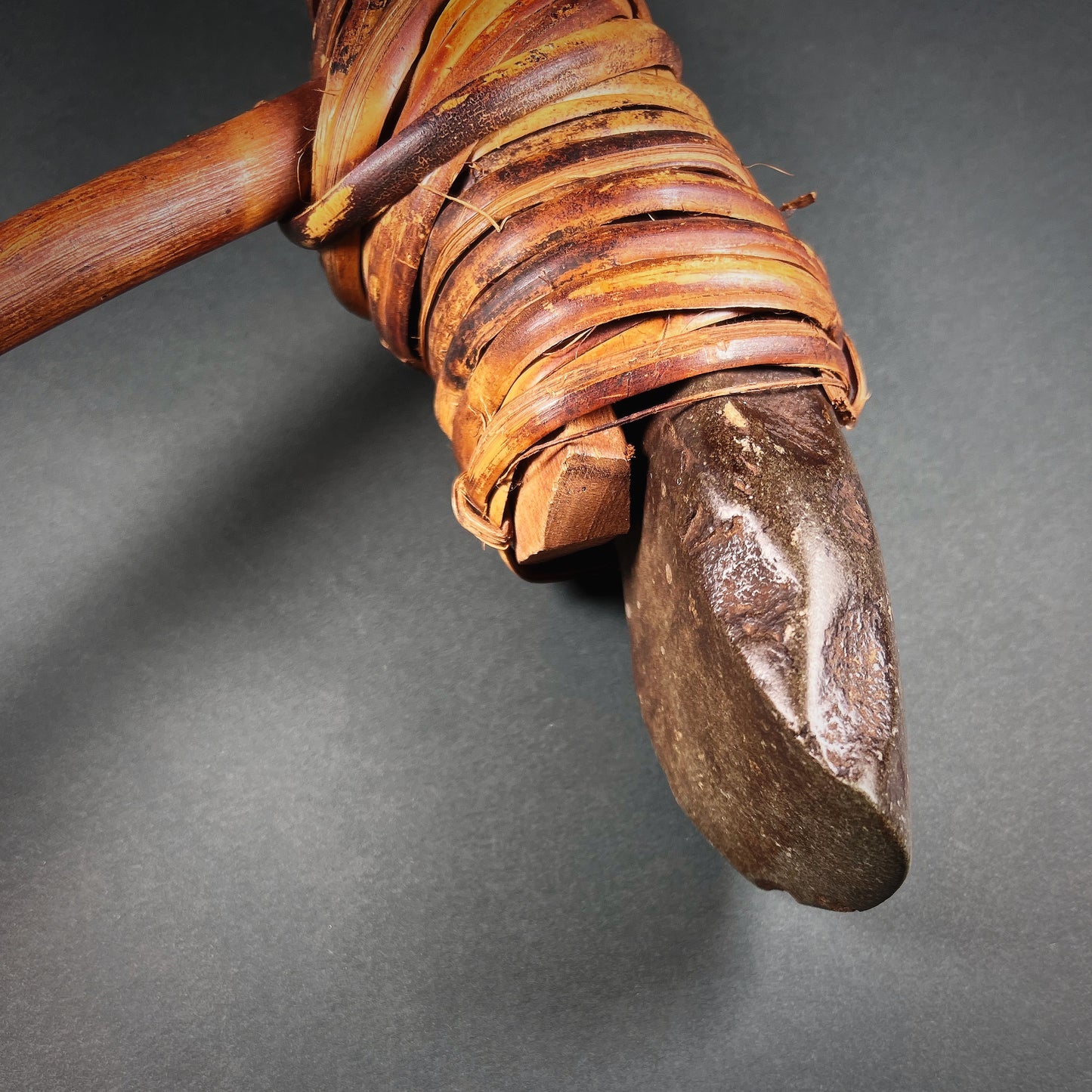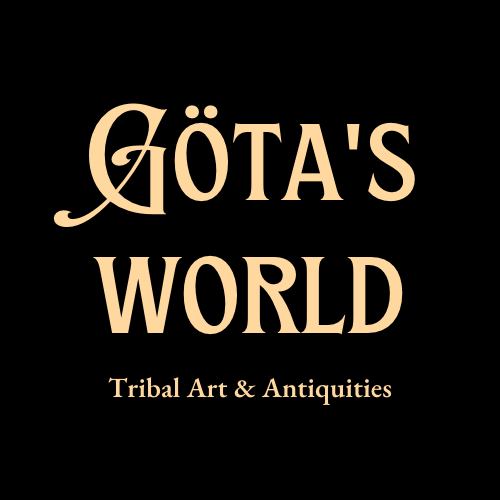Dani Stone Adze (Yara)
Dani Stone Adze (Yara)
Couldn't load pickup availability
Dani people, early to mid-20th century, Baliem Valley, Irian Jaya (Papua), Indonesia
Fabulous traditional agricultural and woodworking tool (yara), featuring a beautifully polished greenstone blade expertly fitted into a hand-carved wooden haft. The handle displays an elegant, tapering curve and a T-shaped head, secured with dozens of tight, honey-brown rattan bindings that firmly anchor the blade in place. The stone, with its acutely angled cutting edge, exhibits the deep, lustrous surface characteristic of the prized chloromelanite—locally known as pibit-pibit—sourced from the Cycloop Mountains.
Such blades were valued not only for their efficiency in everyday labour—cutting timber, carving hardwood, opening sago palms, and digging—but also for their ceremonial significance. The exceptionally hard, veined jade-like stone was extremely difficult to shape, requiring prolonged grinding, and was treasured as a form of wealth and exchange currency. While the haft and wrappings were periodically replaced when worn, the stone blades themselves often circulated for generations. This fine example dates from the mid-20th century or earlier, with the blade quite possibly of significantly older origin.
The Dani are one of the most populous highland groups of Western New Guinea, culturally linked to the Yali, Moni, and Lani. Western contact began only in the late 1930s, with the Dutch establishing their first outpost in the Baliem Valley during the mid-1950s. Prior to this, Dani society was based on intensive agriculture, hunting, and gathering, supported by a robust technological tradition that relied on stone, bone, wood, bamboo, and pig tusk.
Before the arrival of metal tools in the 1960s, all cutting implements—including axes (kapak) and adzes (yara)—were made from stone such as the fine chloromelanite seen here. Everyday material culture included water gourds, tree-bark fibre bags (bilum / noken), and elegantly woven body ornaments. Attire was minimal: men wore penis sheaths (koteka) and decorative ornaments of feathers, pig tusks, and shells; unmarried women wore grass skirts (sili), while married women wore fibre coil skirts (yokal) or elaborate seed skirts.
Masterful in form, function, and cultural significance, this yara is an exceptional and authentic example of Dani craftsmanship—rich in history, spirit, and visual appeal.
Excellent condition. Surface wear and abrasions commensurate with age and use. Chip to the blade. Loose rattan fibers. Size approx. 50,0cm x 29,0cm x 5,5cm.
Provenance: From a Dutch private collection; reportedly originally from the holdings of a now-closed ethnographic museum and foundation in the Netherlands.
For a similar examples see:
Adze, The Metropolitan Museum of Art, Accession Number: 1978.412.1486a,b (https://www.metmuseum.org/art/collection/search/311926)
Adze (yara), Harvard University, The Peabody Museum of Archaeology & Ethnology, Accession Number: 62-7-70/4032 (https://collections.peabody.harvard.edu/objects/details/84619)
Adze, Stichting Papua Erfgoed, Accession Number: EA/39/2 (https://www.papuaerfgoed.org/en/EA/39/2)
References and further reading:
Encyclopedia of World Cultures, Oceania, Karl Heider, edited Terence Hays, G.K.Hall & Company, 1991.
Wealth Items in the Western Highlands of West Papua, Anton Ploeg, Ethnology, Vol.43. No.4 (Autumn 2004), pp. 291-313.
Papua blood: An account of West Papua, Peter Bang, BoD, 16 Apr 2018.




-
Shipping
The shipment will be prepared in the course of 3-5 days and dispatched via Posti Group Oyj or purchased item(s) can be picked up from our shop during the store's opening hours (Tarkk’ampujankatu 4, 00140, Helsinki, Finland). Within the Finland, all items are shipped via Posti Group Oyj unless otherwise requested. We pack the items carefully and mainly in recycled materials because we want to save nature. You will receive the tracking number for your items by e-mail.
-
Returns
Returns and exchange will be accepted within fourteen days (14) of receipt at the purchaser’s cost to include freight and packaging. Items must be returned in the same condition as when they were shipped, and will not be accepted if damaged or altered in any way. Please inform us via email (info@gotanmaailma.fi) or by calling +358408408352 before sending. We do not accept returns more than 14 days after delivery.




